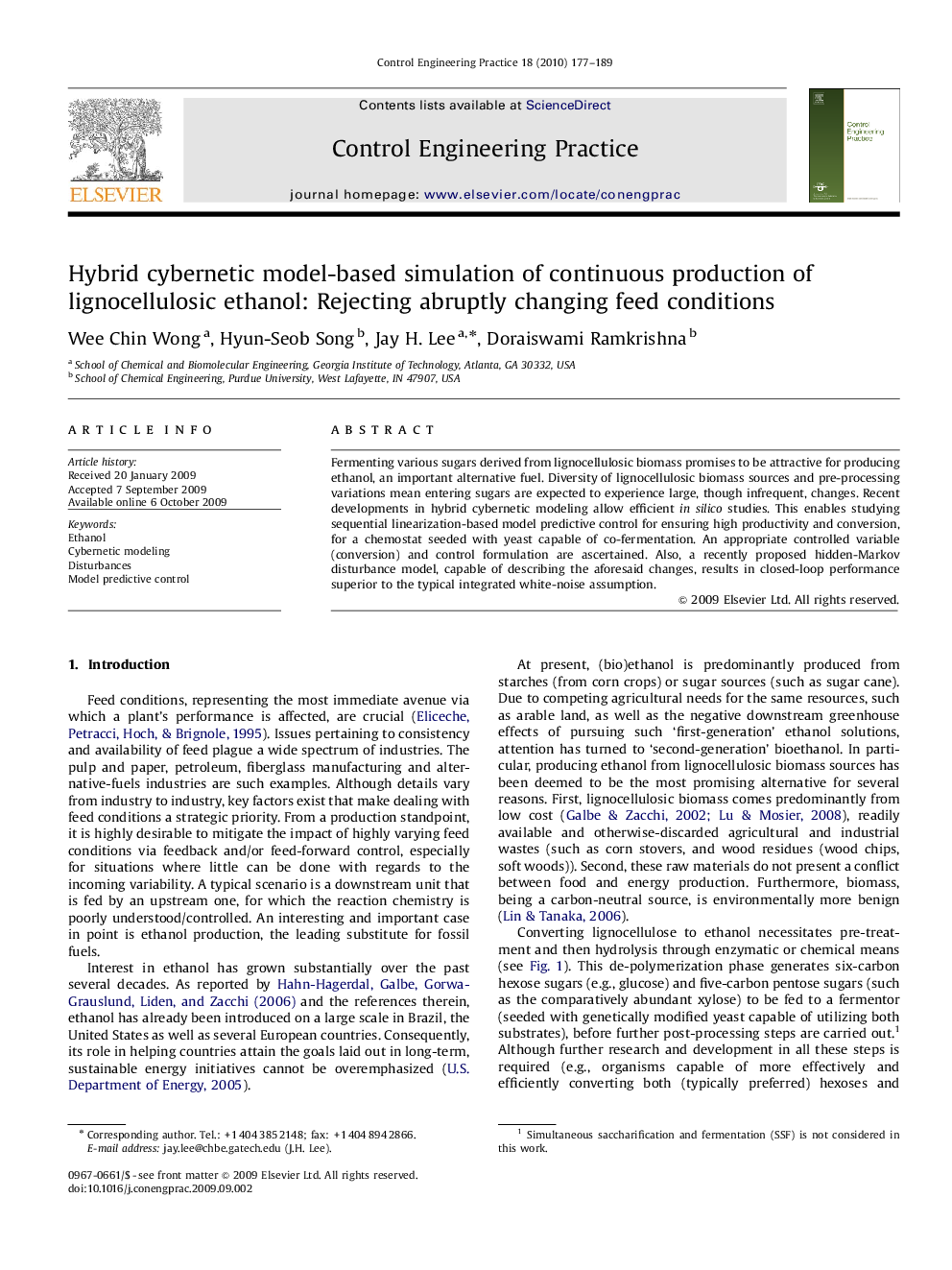| Article ID | Journal | Published Year | Pages | File Type |
|---|---|---|---|---|
| 700045 | Control Engineering Practice | 2010 | 13 Pages |
Fermenting various sugars derived from lignocellulosic biomass promises to be attractive for producing ethanol, an important alternative fuel. Diversity of lignocellulosic biomass sources and pre-processing variations mean entering sugars are expected to experience large, though infrequent, changes. Recent developments in hybrid cybernetic modeling allow efficient in silico studies. This enables studying sequential linearization-based model predictive control for ensuring high productivity and conversion, for a chemostat seeded with yeast capable of co-fermentation. An appropriate controlled variable (conversion) and control formulation are ascertained. Also, a recently proposed hidden-Markov disturbance model, capable of describing the aforesaid changes, results in closed-loop performance superior to the typical integrated white-noise assumption.
